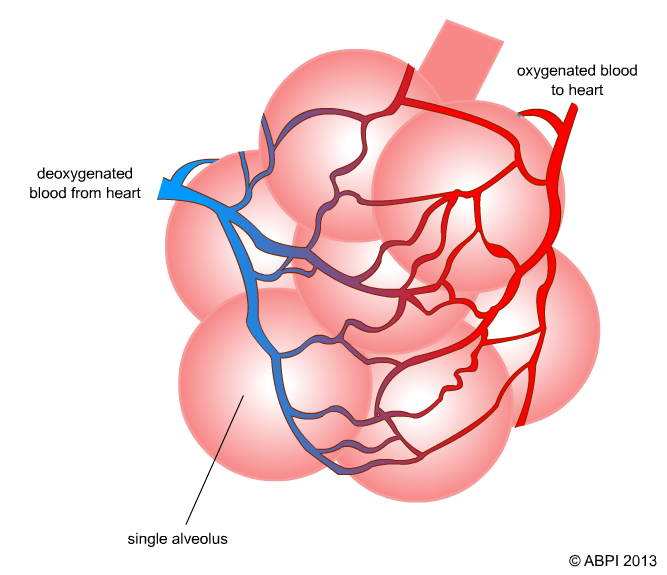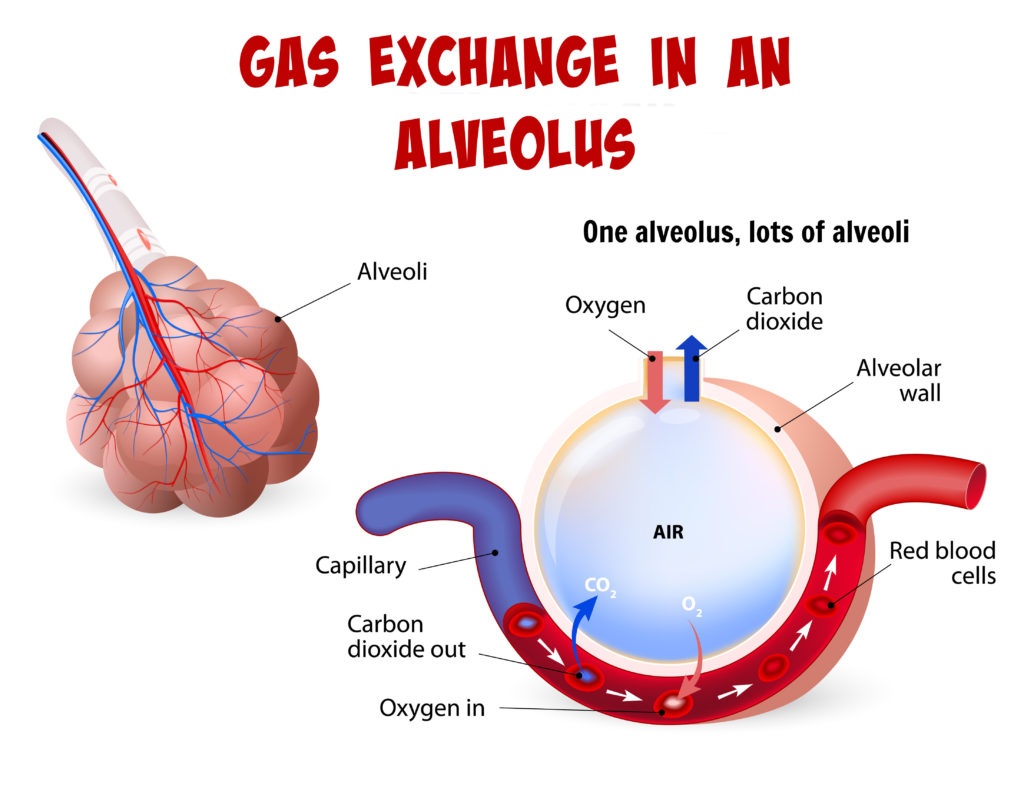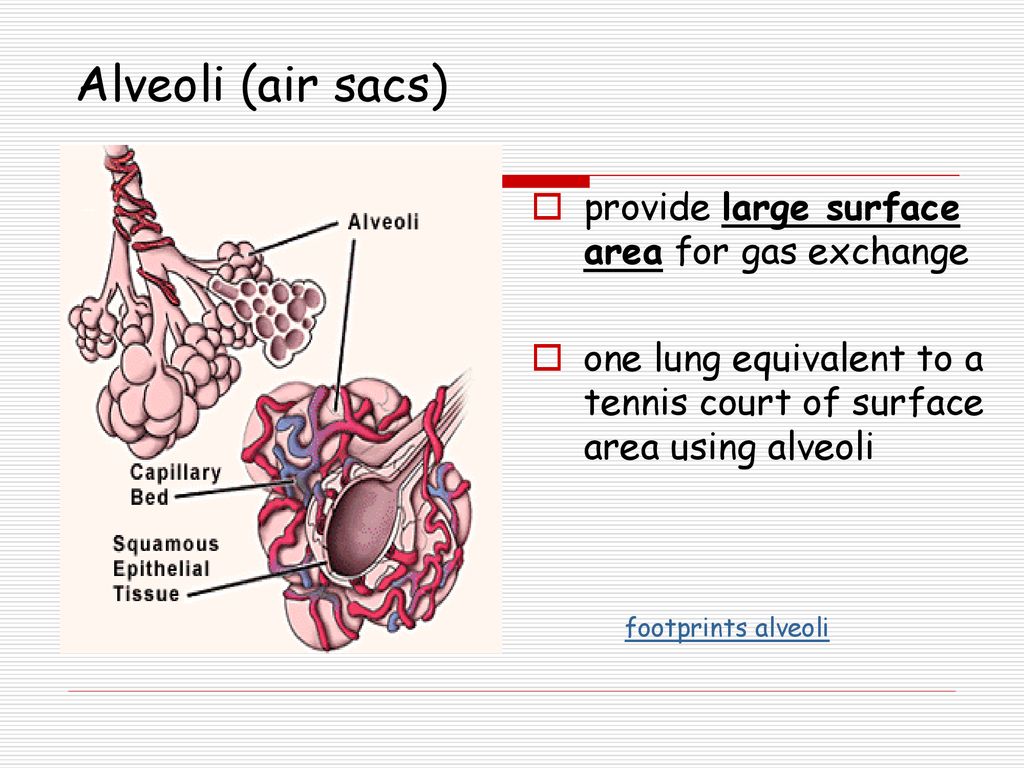A larger surface area to volume ratio means there is more surface area to one unit of volume. The alveoli have a very large total surface area and a very good blood supply provided by the dense network of capillaries that surround them.

The Alveoli And Gaseous Exchange In The Lungs
Why do we need to have a large surface area of alveoli.

. The function of alveuli is to provide a surface for gas exchange. Upvote 4 Downvote 2. Remember the blood capillaries must be in contact with the.
This large surface area is necessary to allow adequate diffusion of oxygen into the capillaries of the lungs. Why do alveoli have a large surface area. Answer 1 of 9.
This large surface area allows for rapid gas exchange. The passive diffusion of oxygen depends on the surface area the thickness of the barrier to diffusion and the partial pressure of oxygen in. Gas exchange is when the oxygen gas in the air we breathe in is absorbed through diffusion into our blood stream via the blood vessels in the alveoli.
Carbon is diffused into the alveoli and oxygen is diffused out from the. This occurs on the surface of the alveoli therefore the more surface area there is the more oxygen gas get taken up and. The surface area of alveoli in adult human lungs is between 70 and 100 square meters a bit more than a doubles tennis court surface area.
Medical conditions like respiratory distress syndrome. The cells of the alveoli are the moist respiratory surfaces where O2 diffuses into the blood and CO2 diffuses out of the blood. The alveoli have a very large total surface area and a very good blood supply provided by the dense network of capillaries that surround them.
The use of mechanical ventilation or a respirator that helps a patient breathe can cause overdistention. A healthy connective tissue support system usually prevents this. The primary function of the lung is gas exchange.
Therefore a large surface area means that there is a lot of area for the gas. Furthermore why is surface area important in the lungs. These processes are passivenot activeenergy amplifiedso the only way to affect the overall diffusion rate is area and the concentration gradients.
These tiny alveoli structures taken all together form a very large surface area to do the work of your breathing both when youre at rest. Large surface area - many alveoli are present in the lungs with a shape that further increases surface area. Due to the many surface walls of the alveoli the lungs have a surface area that is approximately the size of a tennis court.
The layer of moisture in the alveoli allows gases to dissolve so that they can diffuse quickly. The layer of moisture in the alveoli allows gases to dissolve so that they can diffuse quickly. The small round alveoli allow for an amazingly large surface area for this gas exchange to take place.
The rate of oxygen diffusion is dependent on surface area so gas exchange occurs more quickly with larger surface areas. What are the functional units of the lungs. Thin walls - alveolar walls are one cell thick providing gases with a short diffusion.
So that there is enough surface area to sustain the necessary diffusion of gases. Each lung contains millions of these sacs. This can happen very quickly because the surface are of the alveoli is large and the membranes separating the lungs from the red blood cells are very thin.
This means the alveoli have been stretched. Surfactant prevents the alveoli from collapsing between breaths. The alveoli are tiny circular air sacs which are important because they significantly increase the surface area of the lungs.

Sugar Cube Surface Area To Volume Ratio Investigation

Lungs By The End Of The Lesson You Should Be Able To Ppt Download

Question Video Explaining The Adaptations An Alveolus Has For Gas Exchange Nagwa
0 Comments